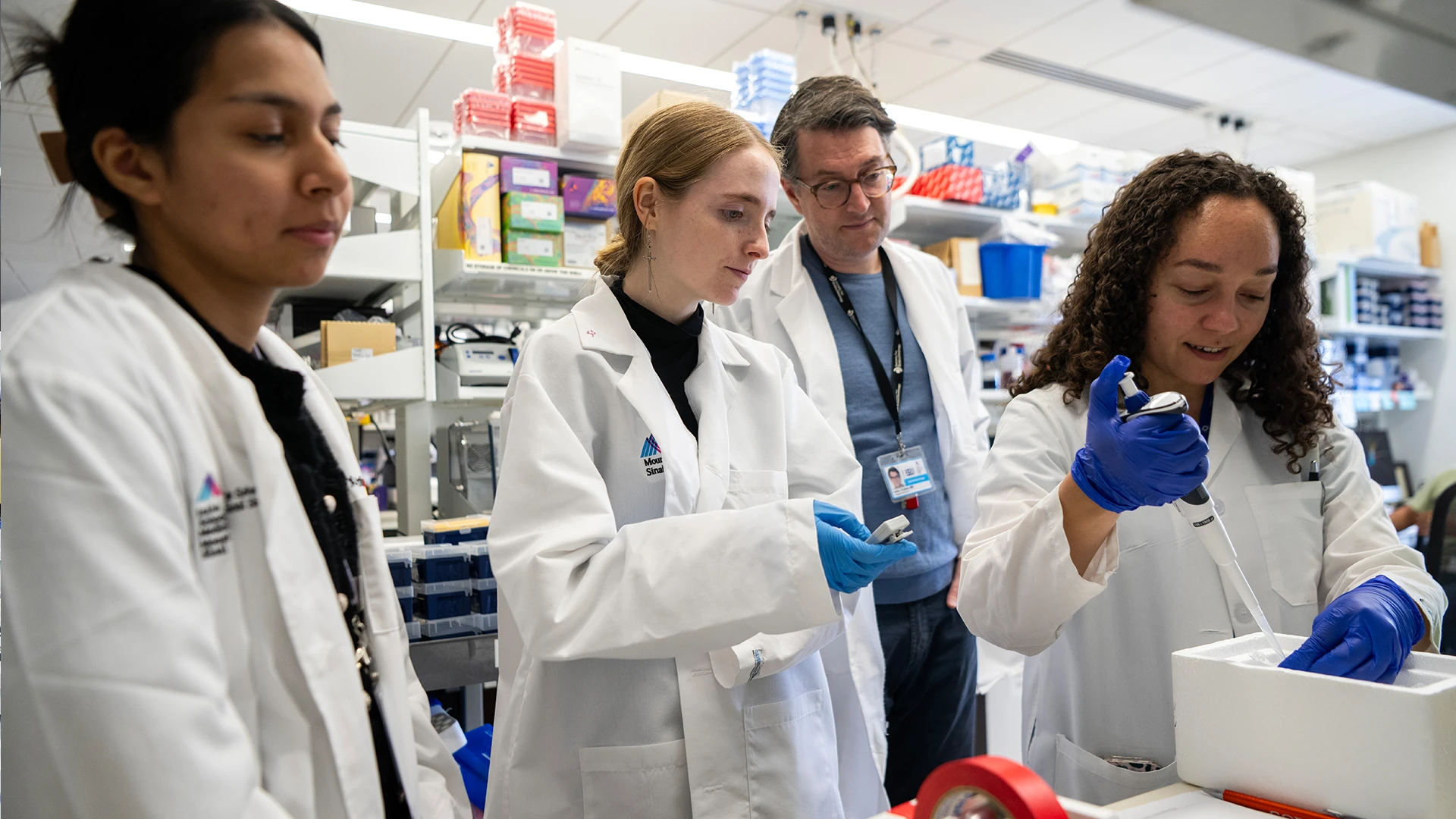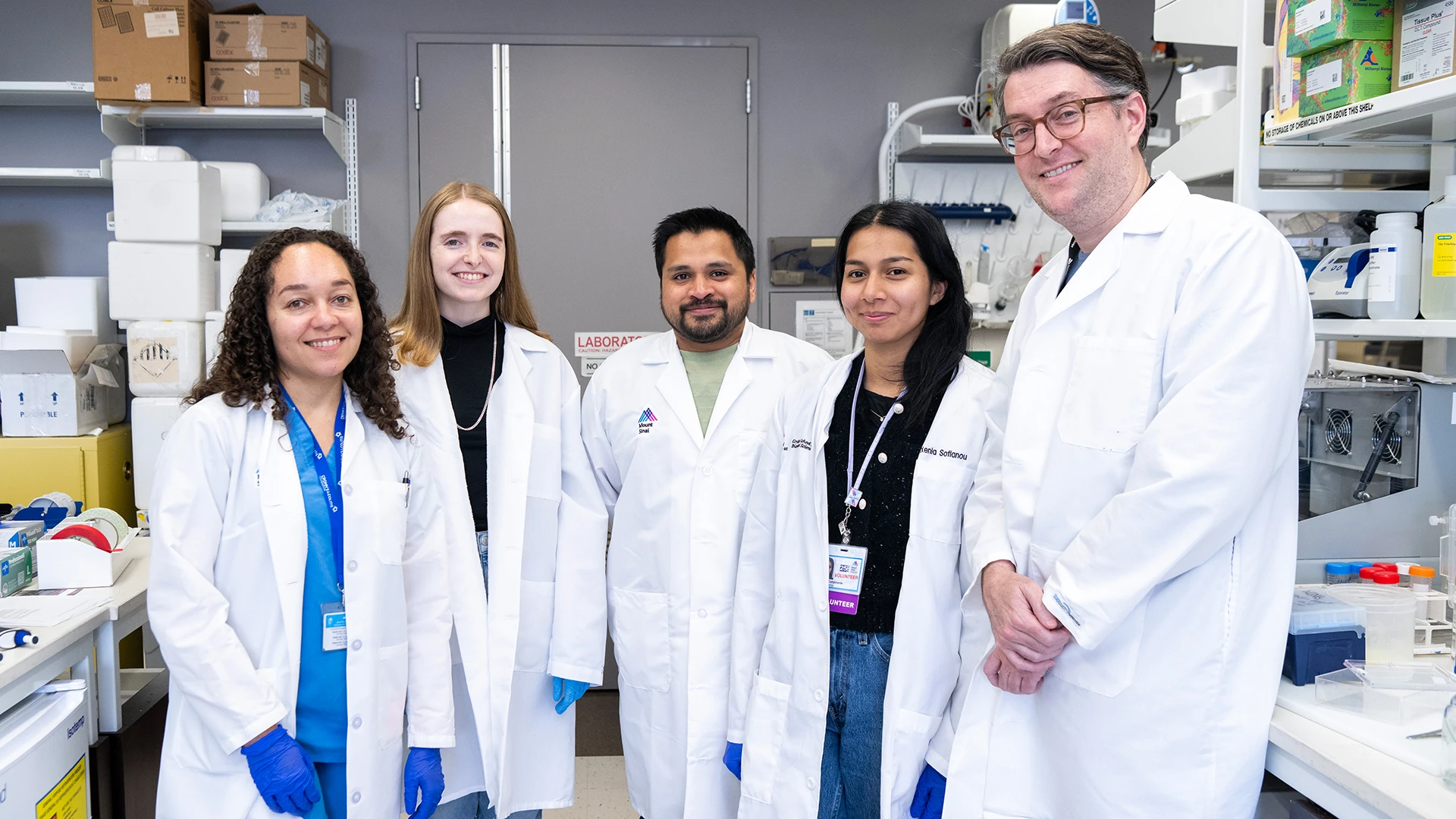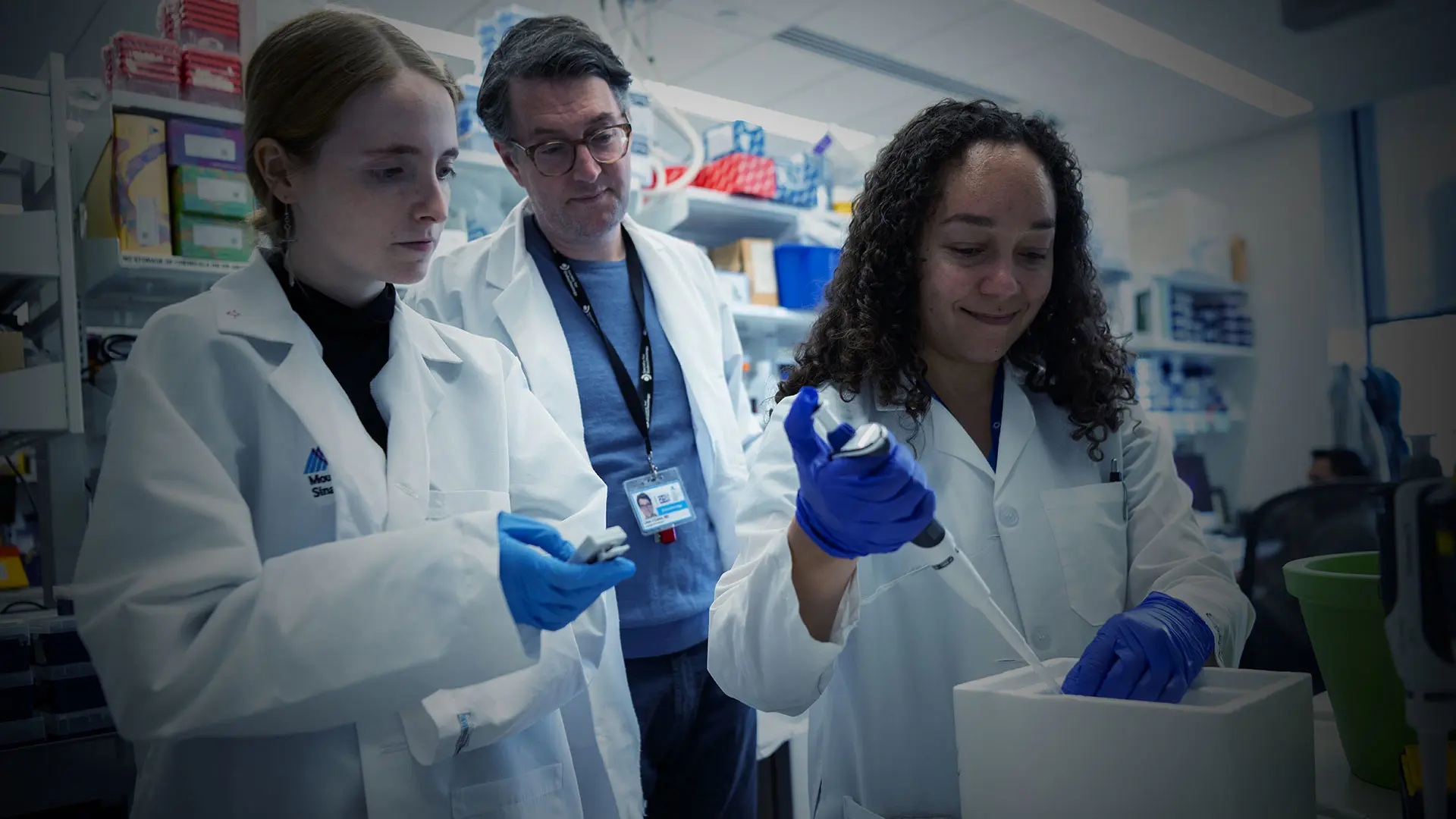Given the poor response of so many Crohn’s disease patients to traditional immunotherapies, Louis Cohen, MD, is more focused than ever on developing a new treatment paradigm.
While the traditional approach prioritizes suppressing inflammation, Dr. Cohen, Assistant Professor of Medicine (Gastroenterology) at the Icahn School of Medicine at Mount Sinai, has been exploring how to enhance healing pathways in the gut. That work has led his lab’s team to look at glucagon-like peptide-1 (GLP-1) agonists, the increasingly popular class of drugs for treating diabetes and obesity.
That work entered a bold new phase in December 2024 with receipt of a $3 million grant from the Leona M. and Harry B. Helmsley Charitable Trust to investigate the potential of GLP-1R agonists to promote healing in the intestinal epithelium of patients with severe Crohn’s disease. The groundbreaking study, which will soon start enrolling, is a collaboration with Washington University School of Medicine in St. Louis and Cedars-Sinai Medical Center in Los Angeles.
“For years, the focus of inflammatory bowel disease (IBD) therapy has been on just curbing inflammation,” says Dr. Cohen. “What we’re proposing is a completely different way of thinking about the disease, where Crohn’s patients might be given two medications, one that suppresses inflammation and another that promotes healing. The impact of this approach could extend well beyond GLP-1 drugs to offer patients who are refractory to traditional treatments a vast new field of therapeutic options.”
Dr. Cohen’s latest work can be traced to stem cell transplantations he began performing on Crohn’s disease patients who had failed standard forms of treatment. When many of these transplants proved successful, he began looking for the underlying mechanisms, and found a possible answer in the restoration of the healing process in the thin protective layer of cells in the intestinal epithelium. That led his lab to GLP-1 therapies: they mimic peptide hormones secreted by the intestine.
“We plan to elucidate the mechanism by which GLP-1R agonists and growth factors can aid tissue repair and enhance gut health,” he explains. “This will, hopefully, pave the way for novel therapeutic strategies for Crohn’s disease and, potentially, ulcerative colitis.” Researchers have drawn encouragement from the fact that some European studies have shown that Crohn’s disease patients exposed to GLP-1 drugs experienced improved outcomes, including decreased need for steroids, surgery, and hospitalizations.

The team includes, from left, research assistant Katelyn Campoverde, research coordinator/technician Katharine Cook, Dr. Cohen, and Daniela Guisado, MD, Instructor of Pediatrics (Gastroenterology).

Dr. Cohen believes glucagon-like peptide-1 agonists, the increasingly popular class of drugs for treating diabetes and obesity, may enhance healing pathways in the gut.
In addition to investigating ways in which cells rebuild and communicate with each other in the intestine, the Helmsley-supported study will look at the effect of GLP-1 agonists on adiposity. This takes on added significance in light of evidence that obesity may affect disease pathophysiology in patients with IBD. GLP-1 agents sold under such brand names as Ozempic and Wegovy have become widely available in recent years for the treatment of obesity and diabetes.
Researchers don’t want to position the class of drugs, however, as primarily targeted at overweight patients with Crohn’s disease. To help ensure its applicability across the board, the team plans to build a nutritional component into its study whereby patients, regardless of weight, could work closely with and be monitored by Mount Sinai’s nutrition specialists.
“While we’re seeing many more patients taking these medications to control obesity, we want our study to represent a paradigm shift for all patients with IBD,” emphasizes Dr. Cohen. “These are typically individuals for whom standard anti-inflammatory drugs don’t work because their intestines have lost the basic ability to heal. We’re now directly addressing that issue.”

From left: Dr. Guisado; Ms. Cook; postdoctoral fellow Shishir Singh, PhD; Ms. Campoverde; and Dr. Cohen
